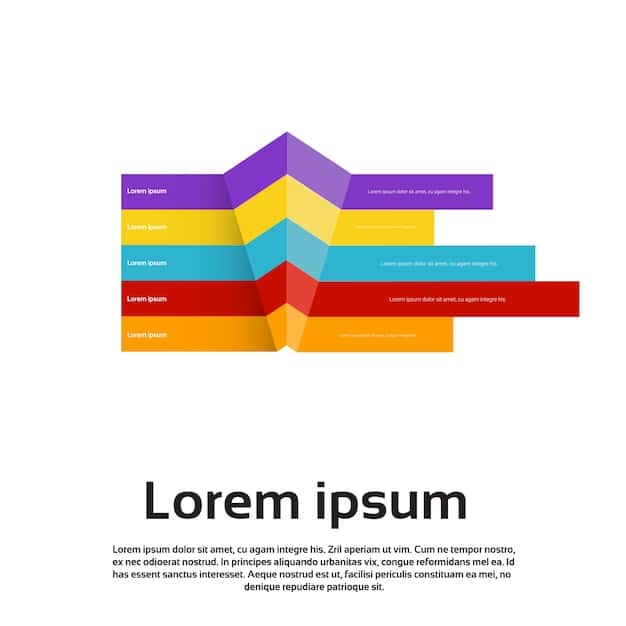REIT Diversification: Is a 70/30 Split the Right Strategy for You?

REIT diversification using a 70/30 split between property types involves allocating 70% of your real estate investment trust portfolio to one property sector and 30% to another, but whether this strategy aligns with your investment goals depends on your risk tolerance, investment horizon, and market outlook.
Navigating the complexities of real estate investment trusts (REITs) requires a strategic approach, especially when it comes to diversification. Is a REIT diversification: Is a 70/30 split between property types right for you? is a question many investors ponder as they aim to balance risk and reward in their portfolios.
Understanding REIT Diversification
REIT diversification is the strategic allocation of investments across various real estate sectors to mitigate risk. It is not about merely holding multiple REITs but ensuring exposure to different property types that react differently to economic cycles. Let’s delve into why this is a cornerstone of prudent investment.
The importance of spreading your investments
Diversifying your REIT portfolio serves to insulate it from sector-specific downturns. When one property type struggles, others may thrive, cushioning your overall returns.
Analyzing different property types
Each property type—residential, commercial, industrial, retail—has unique drivers and vulnerabilities. Understanding these nuances enables more informed allocation decisions.
- Residential REITs: These tend to be stable as housing demand is relatively constant.
- Commercial REITs: Office spaces are sensitive to economic growth and employment rates.
- Industrial REITs: Driven by manufacturing and logistics, these can benefit from e-commerce trends.
- Retail REITs: Performance depends on consumer spending and retail market dynamics.
In conclusion, understanding the diverse characteristics of each property type is essential for effective REIT diversification. By strategically allocating investments across these sectors, investors can mitigate risk and potentially enhance returns by capitalizing on the unique dynamics of each market segment.
The 70/30 Split: A Closer Look
The 70/30 split is an allocation strategy where 70% of a REIT portfolio is invested in one property type while the other 30% is allocated to a different one. This approach aims to concentrate on a primary sector while still enjoying some diversification benefits. But is this approach always appropriate?
How the 70/30 allocation works
A 70/30 allocation means that the investor believes one sector will perform well, but they also want a hedge in case their primary sector underperforms.
Potential benefits and risks
The benefits include focus on a strong sector and some diversification. The risks involve a potential over-allocation to a sector that may not perform as expected.

In summary, the 70/30 split offers a middle ground between concentrated investment and broad diversification, but success hinges on accurate sector analysis and understanding market dynamics.
Choosing the Right Property Types for Your Split
Selecting the right property types for your 70/30 split relies on various factors, including your risk tolerance, market outlook, and investment goals. Aligning these elements can help optimize your portfolio’s performance.
Assessing your risk tolerance
Are you willing to take on more risk for potentially higher returns, or do you prefer a more conservative approach?
Analyzing market conditions and trends
Which property types are poised for growth, and which are facing headwinds? Identifying these trends is critical for informed decisions.
- Growth Potential: Sectors experiencing technological advancements or demographic shifts.
- Risk Factors: Sectors sensitive to interest rate hikes or regulatory changes.
- Economic Indicators: Evaluating GDP growth, employment rates, and inflation to gauge sector health.
Ultimately, the choice of property types must align with your individual risk profile and be supported by thorough market analysis, ensuring a strategic approach to achieve your intended investment outcome.
Alternative REIT Diversification Strategies
While the 70/30 split is one approach, several other strategies can be employed for REIT diversification. Understanding these alternatives can help you tailor your portfolio to your specific needs and preferences.
Equal allocation strategy
This involves dividing your investment equally among different property types, offering broad exposure and risk mitigation.
Market capitalization weighting
Here, investments are allocated proportionally to the market capitalization of each REIT, reflecting the overall market composition.
In summary, alternative diversification strategies offer varied approaches to portfolio construction, each with distinct risk and return profiles. The key lies in aligning the chosen strategy with your individual financial objectives and risk appetite to achieve a well-balanced and resilient investment portfolio.
Implementing a 70/30 REIT Strategy
Putting a 70/30 REIT strategy into practice requires careful planning and execution. Several key steps can ensure you stay on track and maximize the potential of your investment.
Setting clear investment goals
What are you hoping to achieve with your REIT investments? Defining your objectives helps guide your allocation decisions.
Researching and selecting REITs
Which REITs align with your chosen property types and investment criteria?

Monitoring and rebalancing your portfolio
Regularly reviewing your investments ensures that your allocations remain aligned with your strategy and market conditions.
- Regular Reviews: Assess portfolio performance against goals.
- Rebalancing: Adjust allocations to maintain the 70/30 split.
- Market Analysis: Stay informed on economic and sector trends.
In conclusion, successful implementation involves setting clear goals, conducting thorough research, and maintaining ongoing monitoring to adapt to market dynamics and align with your investment objectives.
Examples of Successful REIT Diversification
Analyzing real-world examples can provide valuable insights into how effective REIT diversification strategies work. Observing the successes and challenges of others can guide your own investment approach.
Case study 1: Focus on residential and industrial REITs
An investor allocates 70% to residential REITs for stable income and 30% to industrial REITs to capture growth from e-commerce.
Case study 2: Balancing commercial and specialized REITs
Another investor opts for 70% in commercial REITs with long-term leases and 30% in specialized REITs like data centers for technological exposure.
In summary, these case studies highlight the importance of understanding market trends and leveraging different property types to optimize portfolio performance and mitigate risk.
| Key Point | Brief Description |
|---|---|
| 🏢 Property Types | Residential, commercial, industrial, and retail each offer unique opportunities. |
| 📊 70/30 Split | Allocate 70% to a primary sector and 30% to another for diversification. |
| 🎯 Investment Goals | Assess your risk tolerance and align REITs with your financial objectives. |
| 🔄 Rebalancing | Regularly adjust allocations to maintain the desired 70/30 split. |
FAQ Section
▼
A REIT (Real Estate Investment Trust) is a company that owns or finances income-producing real estate. Investing in REITs allows you to gain exposure to the real estate market without directly owning properties, offering potential dividends and capital appreciation.
▼
The 70/30 split involves allocating 70% of your REIT investment to one property type and 30% to another. This aims to balance focus on a strong sector with some risk mitigation through diversification.
▼
Consider your risk tolerance, investment goals, and market outlook. Analyze which property types align with your objectives and are poised for growth, while also assessing potential risks.
▼
Rebalance your portfolio regularly, typically quarterly or annually, to ensure your allocations remain aligned with the 70/30 split and to adjust for market fluctuations and performance variations.
▼
Yes, alternatives include equal allocation, where you divide investments equally among property types, and market capitalization weighting, where allocation is proportional to each REIT’s market capitalization.
Conclusion
In conclusion, implementing a REIT diversification: Is a 70/30 split between property types right for you?, can be a strategic approach to balancing risk and return, it is crucial to align your investment strategy with your individual circumstances, market conditions, and long-term objectives. Careful consideration of property types, risk tolerance, and ongoing portfolio management will pave the way for a successful and diversified REIT investment journey.





